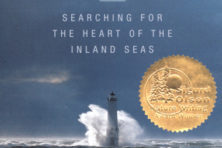Great Year for Great Lakes
- Share
- Tweet
- Pin
- Share
The eight states and two Canadian provinces that border the Great Lakes took an unprecedented step to protect the precious resource in 2008, finally putting signatures to paper to make the Great Lakes Compact a reality.
Jerry Viste, President of the Door County Environmental Council called the signing “the best thing that’s happened, environmentally speaking, in years.”
Held up by manufacturing interests and objections from communities outside the Great Lakes water basin for years, it was feared just a year earlier the compact would fall apart.
The agreement required the approval of several legislative bodies to come to fruition. The Assembly and Senate of each state had to approve the measure, and only then could it be sent to Washington for approval from Congress and the Senate, and finally, the signature of President George W. Bush.
Even after receiving approval from the states, many didn’t expect an easy ride through Washington, but the compact sailed through, and President Bush signed it Oct. 3.
Viste cited the Alliance for the Great Lakes as the chief organization whose 10-year efforts carried the Compact from an idea to full reality. He also noted that all eight of Wisconsin’s congressmen voted in favor of the Compact.
The compact regulates water diversion, use, and pollution issues in the five freshwater lakes. In recent years Lake Michigan and Lake Superior have experienced water levels approaching all-time lows and officials in several water-starved southwest states have made proposals to divert or take water from the Great Lakes to fulfill shortfalls, claiming the lakes as a national, not regional resource.
The states of Wisconsin, Illinois, Minnesota, Indiana, Ohio, Pennsylvania, Michigan and New York all had to sign the compact before it could go to Washington.


